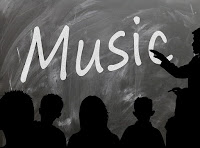Picture Books in the Music Classroom
Did you know that lots and lots of elementary music teachers use picture books in their classroom? They go way beyond the typical read-aloud. There are all sorts of ways music teachers can link musical activities to books.
Sound Effects
When the characters in the book make noise, kids can use musical instruments to bring the sounds to life! Clicking sticks together, dinging a triangle, thumping a drum. You don't have to mention the sounds in your text for this to work, but vivid verbs can help: "Eliza stomped up the stairs" or "the dog swished through the tall grass" or "the thunder boomed."
Character Themes
If you've watched Star Wars, you know character themes. Princess Leia has a beautiful melody. Darth Vader has a menacing theme. Luke Skywalker's music is triumphant. If you have several distinct characters in your book, a music teacher could reinforce each one's appearance with a different instrument or a different tune.
Dictating Rhythm
Maybe you've written a story in rhyme. Then you've probably heard about the meter and rhythm of words. In music class, a fun spoken word pattern can become a musical pattern for students to echo on their instruments or by clapping their hands. This can be especially effective if you have a repeated phrase throughout your story.
Concepts
Music is made up of high sounds and low sounds. Long sounds and short sounds. Rattling sounds and soothing sounds. If your book explores concepts like these, a music class can use the story as inspiration to perform in these ways.
Movement
While movement itself isn't so musical, moving to music is a common activity in the music classroom. Movements inspired by your story, when done to a repetitive beat, or done in a pattern, can easily fulfil musical objectives. Maybe an elephant sways it's trunk. Maybe a little girl skips. Maybe a dragon stretches its wings.
There are many more ways a music teacher might use a picture book in class. As you write, keep in mind that your book can be performed in addition to being read aloud. When you take your completed book to school visits, maybe you can use these ideas to make your reading more interactive. Even if the students don't have instruments, they can use their bodies and voices to get involved.
Can you think of other ways your story might be used in the music classroom?



Comments
Post a Comment